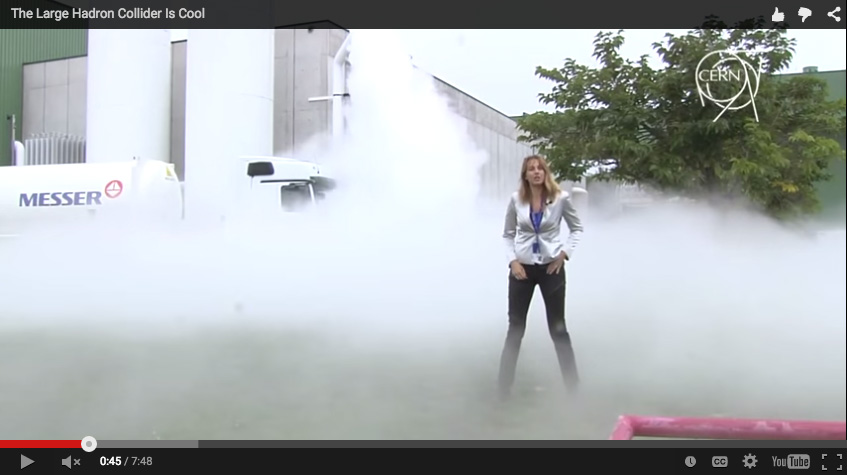It’s the largest, most complex machine ever built and has become one of the coldest places on planet Earth. Without helium however, the Large Hadron Collider (LHC) is nothing more than a $9 billion tube.
Hey we have tons of helium too by the way. Get a free helium quote. It’s free!
The machine
The LHC uses a series of massive electromagnetic coils that produce the magnetic field required to keep particle beams on track as they zoom around the 17-mile loop. The magnets require 11,850 amps to operate, which as one would imagine, generates an incredible amount of heat. (Imagine the heat that comes off of that 60-Watt bulb in your bathroom, which requires about 0.54 amps. Now multiply that heat by 21,944 light bulbs.)
The challenge
Preventing the LHC from overheating is just the tip of the iceberg. The magnetic coils need to be cooled— frozen actually, in a process most people know as cryogenics. If a temperature of -456.34°F in the collider isn’t achieved (that’s colder than space, by the way), the superconductivity required to smash particles cannot exist.
Cooling the Large Hadron Collider
A huge volume – about 96 metric tons – of superfluid helium is circulated through a closed-circuit system while the Large Hadron Collider is in operation. However, it’s not as simple as flipping on a switch.
In the first of a three-stage cryogenic process, liquid helium is cooled with liquid nitrogen until it reaches -315°F. After the first stage is completed, massive turbines then cool the helium further, down to -451°F. At this point, the helium is then injected into the magnets where refrigeration units complete the third and final stage of the process, cooling the helium to a superfluid state of -456.34°F.
The entire operation takes several weeks to complete.
Massive LHC helium leak
In 2008, nine days after going live following a decade of construction, the LHC had to be shut down when a faulty electrical connection between two of the magnets caused approximately 6 metric tons of liquid helium to leak into the LHC’s tunnel. It took more than a year to repair the damage to the collider.
YOU can help power the LHC!
Did you know that you can help with the LHC project just by donating idle time from your personal computer? Check this out.


